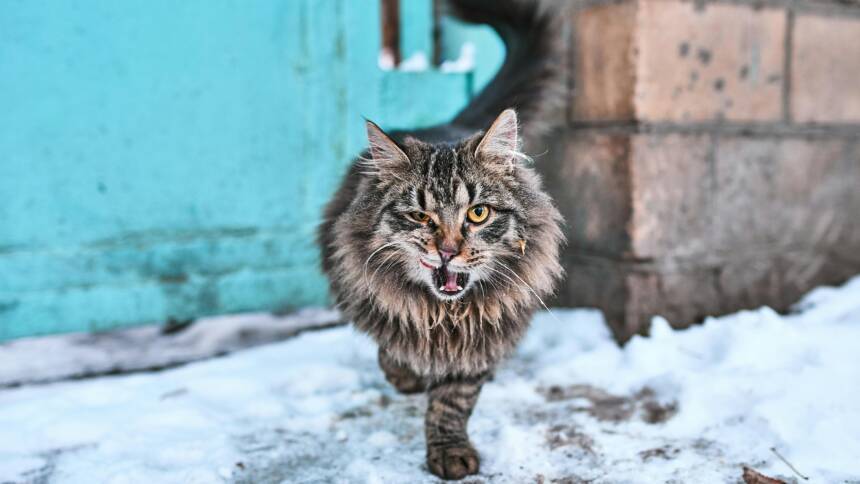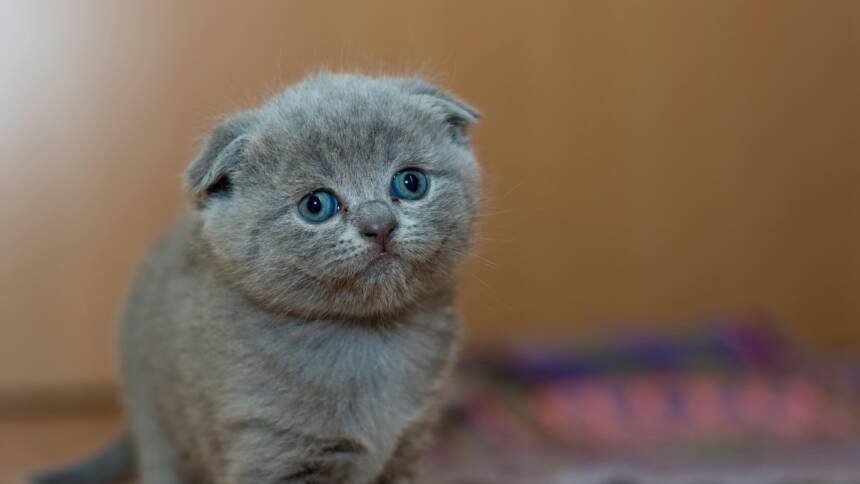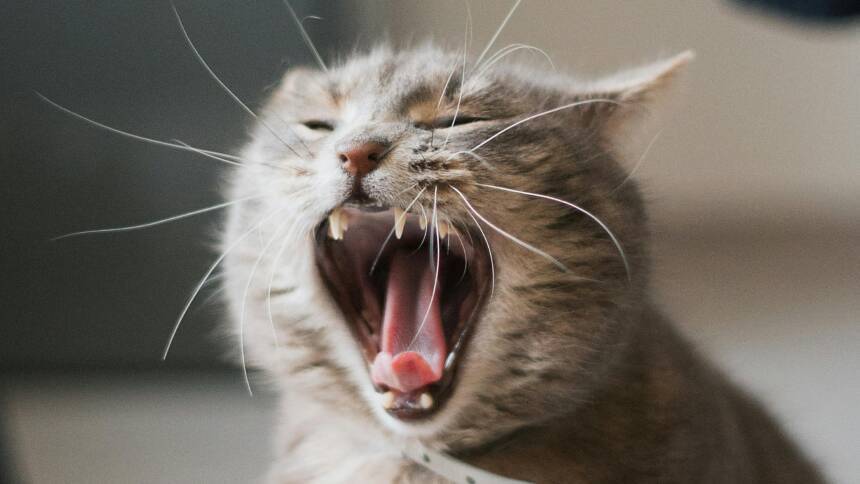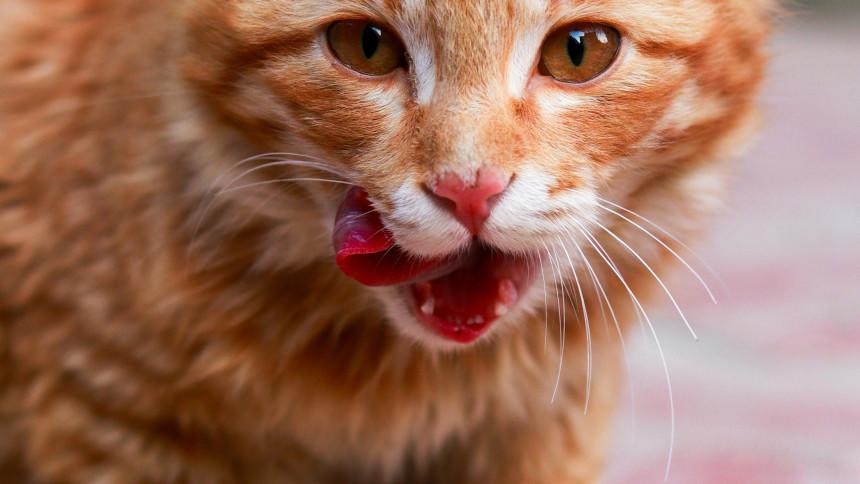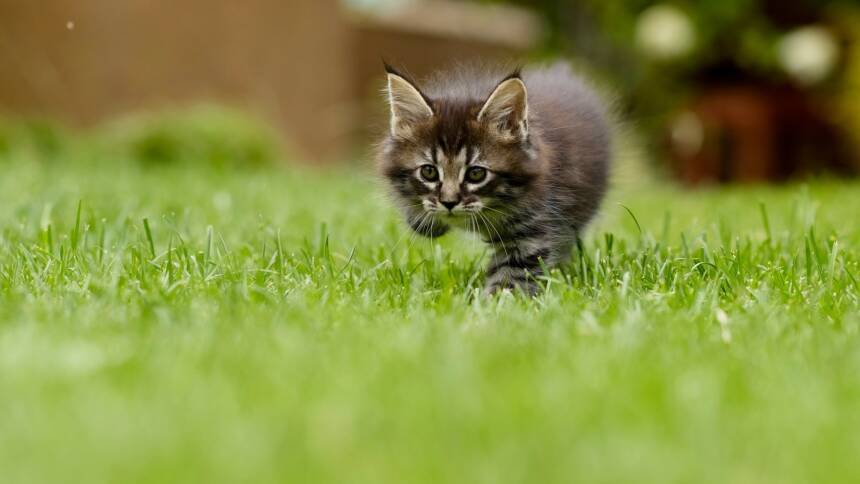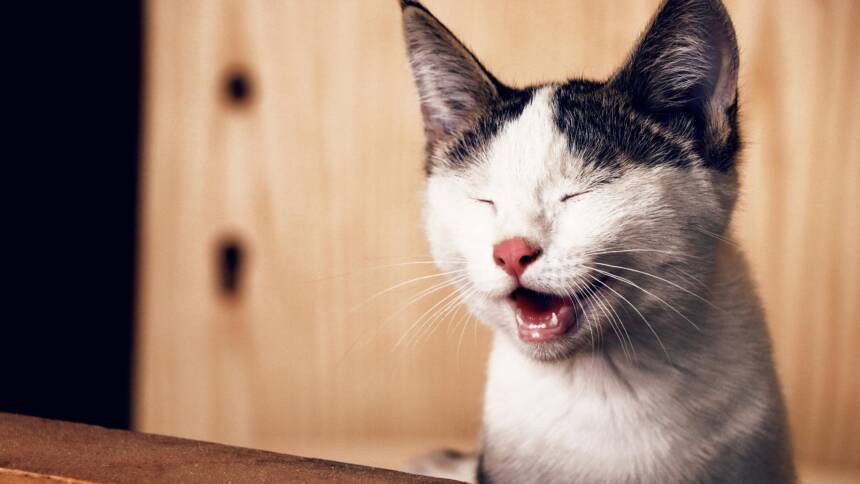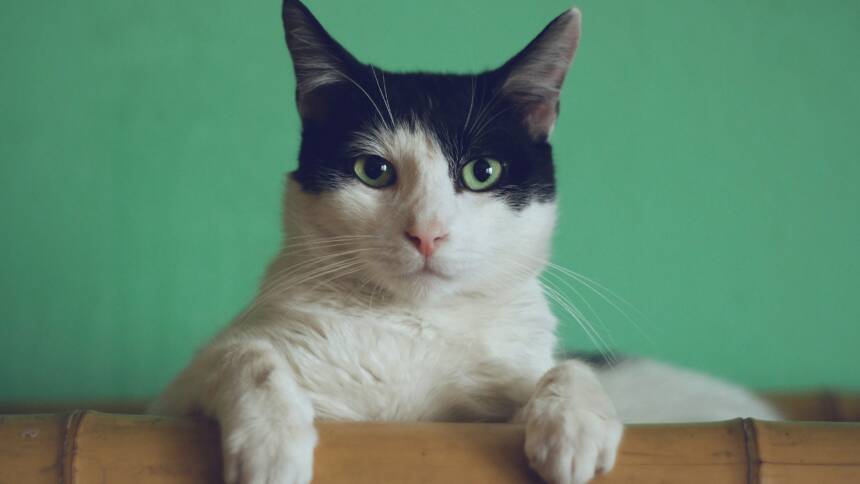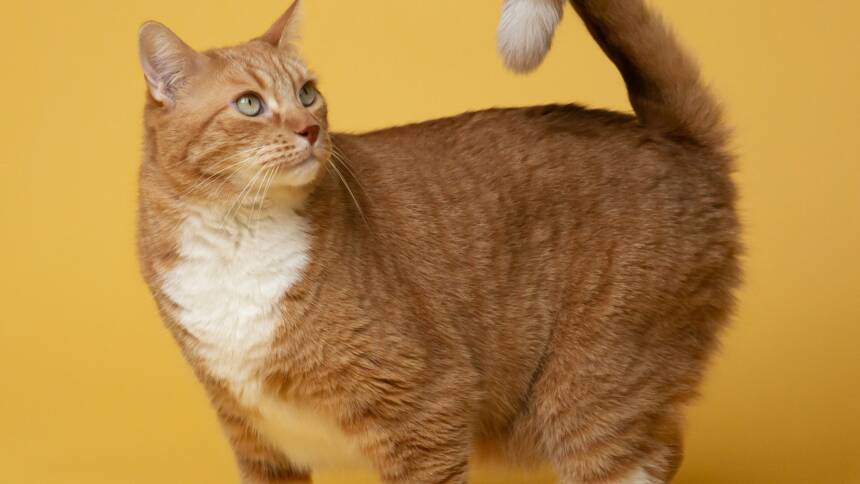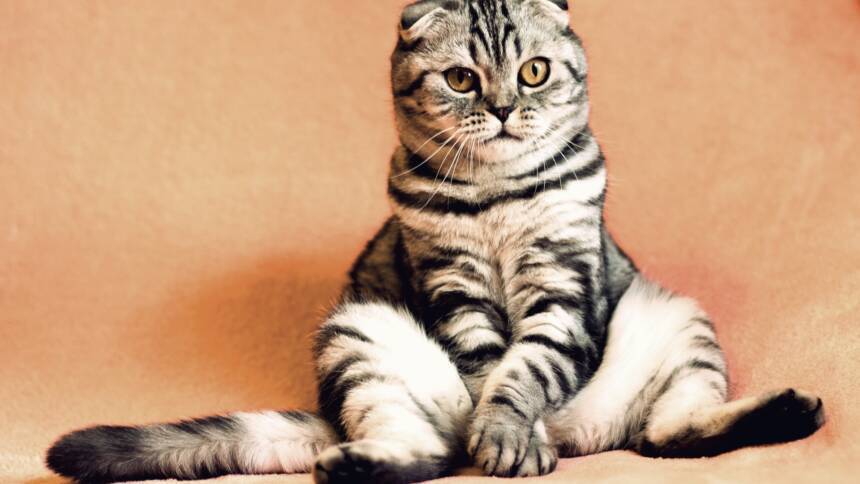Cat drooling can raise questions about the health and well-being of our feline companions. Cats drool for various reasons, and while some instances are benign, others might signal underlying health issues. For example, it’s natural for a cat to drool while purring contentedly on a beloved owner’s lap or when anticipating a meal. However, excessive or sudden onset of drooling might be indicative of dental disease, mouth injuries, or exposure to toxins — conditions that warrant immediate veterinary attention.
Concerns about the safety of cat drool for humans are not unfounded, given that a cat’s mouth can harbor bacteria that are potentially harmful. While it is generally rare for cat drool to cause harm to humans, specific bacteria, such as Bartonella henselae, which causes cat scratch disease, can be transmitted through bites or saliva. The risks are notably higher for individuals with weakened immune systems. Therefore, good hygiene practices, such as hand washing after handling pets and their accessories, are crucial in minimizing the likelihood of zoonotic disease transmission.
Observing a cat’s behavior around drooling is essential. Stressful situations can elicit drooling, which typically resolves when the stressor is removed. Conversely, if drooling is accompanied by other signs such as lethargy, appetite loss, or visible mouth discomfort, it may be more than a behavioral reaction and could suggest a serious medical issue. Owners should monitor their pets for any atypical signs and consult with a veterinarian to ensure their cats’ health and the safety of all household members.
Understanding Cat Drool
Cat drool is a normal physiological response, but it can also be a sign of health issues. It’s important for cat owners to discern the differences between normal and problematic drooling to ensure their pet’s well-being.
Normal vs. Abnormal Drooling
Normal Drooling is often observed when a cat is in a state of relaxation or experiencing happiness. It’s not uncommon to see a cat drool while purring or kneading, which are behaviors associated with contentment. This type of drooling is typically mild and short-lived.
- Normal Triggers:
- Relaxation
- Purring
- Kneading
- Happiness
Abnormal Drooling, however, can be an indicator of underlying issues. Excessive or sudden drooling, especially if accompanied by other symptoms such as reluctance to eat or drink, can signal stress, fear, anxiety, or a medical concern.
- Potential Signs of Abnormal Drooling:
- Sudden onset
- Excessive and continuous flow
- Accompanied by behavioral changes
Causes of Excessive Drooling
Excessive drooling in cats can be caused by several factors ranging from benign to serious health concerns.
- Emotional Factors:
- Stress or fear: High-stress situations or anxious behavior
- Excitement: Overstimulation from the environment or anticipation of food
- Physical Factors:
- Foreign Object: An object stuck in the mouth or throat can stimulate saliva production.
- Toxin Ingestion: Exposure to toxins—like certain plants, chemicals, or harmful human foods—requires immediate veterinary care.
- Ingesting substances like grass can sometimes cause nausea, leading to drooling.
When noticing changes in a cat’s drooling patterns, owners should monitor the behavior and consult a veterinarian if the drooling is excessive, persistent, or accompanied by other concerning symptoms.
Common Health Issues Associated with Drooling
Excessive drooling in cats can sometimes be a marker for underlying health issues. It’s imperative to discern whether a cat’s drooling is benign contentment or a sign of medical concerns requiring attention.
Dental and Oral Health Problems
- Dental Disease: Dental disease, inclusive of gingivitis and periodontal disease, often manifests in cats as persistent drooling. This is due to the discomfort and pain caused by the inflammation or infection within the mouth.
- Tooth Issues: Tooth decay or damage can result in excessive salivation. Cats may exhibit signs of difficulty eating or a reluctance to chew on their usual toys.
Systemic Illnesses
- Kidney Disease: Kidney disease can lead to the buildup of toxins in the bloodstream, which sometimes causes nausea and resultant drooling.
- Respiratory Infections: Certain respiratory infections can trigger drooling due to the discomfort or inability to swallow normally.
- Cancer: In rare cases, the presence of tumors in the mouth or throat may cause a cat to drool excessively.
Behavioral and Environmental Factors
In understanding why cats drool, it’s important to consider both behavioral patterns and environmental stimuli. These can induce physiological responses in cats, such as drooling, which, in most cases, is not harmful to humans. Stress, anxiety, and external triggers are key factors that might lead to a cat expressing this behavior.
Stress-related Drooling
Stress and anxiety in cats can manifest through a variety of behavioral changes, including drooling. Situations that induce fear, such as a visit to the vet or loud noises, can trigger an increase in salivation. This type of drooling is typically a response to stress rather than a health issue, and it indicates that a cat is experiencing a high level of discomfort.
- Common stressors include:
- Changes in the environment
- Introduction of new pets
- Loud noises or disturbances
External Triggers of Drooling
Cats may also drool due to environmental factors, such as toxin exposure. When a cat comes into contact with a poisonous substance, such as certain plants or chemicals, they may drool excessively as a symptom of ingestion. This is a protective mechanism signaling that the cat needs to expel a potentially harmful substance.
- Substances that can cause toxic reactions:
- Lilies
- Poinsettias
- Household cleaners
While most causes of drooling are not directly harmful to humans, ensuring the cat’s environment is safe from toxins is crucial for both the pet’s health and the well-being of their human companions.
Toxicity and Poisoning
Understanding the risks associated with toxins is essential to preventing accidental poisoning in pets and humans alike. When it comes to cat drool, it’s important to consider its causes, which can include both harmless triggers and serious toxic exposures.
Common Toxins in the Home Environment
Household environments harbor a variety of substances that can be toxic if ingested by cats. Common household toxins include:
- Plants: Lily species and poinsettias can cause kidney failure and gastrointestinal upset, respectively.
- Foods: Onions, garlic, chocolate, and xylitol are poisonous to cats.
- Chemicals: Antifreeze containing ethylene glycol is highly toxic and can lead to kidney failure.
Symptoms of Poisoning
Cats experiencing poisoning may exhibit symptoms that require immediate attention:
- Gastrointestinal: Vomiting, upset stomach, loss of appetite, and difficulty in swallowing.
- Neurological: Lethargy, trembling, seizures, and unsteady gait.
- Respiratory: Panting and coughing may occur in some cases.
Prompt veterinary care is advised if any symptoms of poisoning are observed to prevent harm to both the cat and humans, as handling bodily fluids from a poisoned pet could carry risks.
Diagnosis and Treatment
Determining the cause of a cat’s drooling and seeking the appropriate treatment are essential for maintaining both feline health and human safety. It is crucial to discern when veterinary attention is warranted and to understand the possible treatment options available.
When to Visit the Vet
A cat owner should consider a trip to the vet when drooling is accompanied by abnormal behavior, loss of appetite, or when the drooling is excessive and ongoing. Veterinary attention is also necessary if the drooling is suspected to be due to ingestion of a foreign body or toxic substance, since this can be dangerous to both the cat and indirectly to humans through contact. A vet can perform a diagnosis to determine the underlying cause.
- Abnormal behavior: Lethargy, refusing food, pawing at the mouth
- Foreign body ingestion: Toys, strings, household items
- Toxic substance ingestion: Household plants, chemicals
- Dental issues: Gum disease, tooth abscess
Possible Treatments
Once a diagnosis has been made, a vet may prescribe medications or recommend specific treatment options. For dental issues, treatment might include a dental cleaning or tooth extraction. If a foreign body is the cause, removal under anesthesia may be necessary. In the case of a bacterial infection, antibiotics might be prescribed to eliminate the infection.
- Medications: Antibiotics, anti-inflammatories, pain relief
- Dental treatments: Cleaning, extractions
- Foreign body removal: Surgical intervention
- Supportive care: Hydration, special diets
It’s important that treatment begins promptly to ensure the best outcome for the feline and to prevent any secondary issues that might affect human health.
Prevention and Care
Ensuring the health and safety of individuals around cats involves attention to the pet’s dental hygiene and minimizing their exposure to harmful substances. Here is how caregivers can implement effective prevention and care strategies.
Dental Hygiene Practices
Dental Care: Owners can reduce the risk of dental diseases, which are common in cats, by establishing a routine that includes regular teeth brushing with veterinary-approved toothpaste. Preventive Measures such as yearly dental check-ups by a veterinarian can detect early signs of oral discomfort or dental disease.
- Maintenance: Incorporate a dental diet or specially-formulated dental treats to promote oral health.
- Grooming: Routine brushing helps to remove bacteria and food particles that can accumulate and lead to dental issues.
Preventing Exposure to Toxins
Dietary: Caregivers should be aware of their cat’s dietary needs, including potential food allergies that might lead to drooling. A nutritious, balanced diet is key; avoid foods known to be toxic to cats.
- Toxins: Keep all forms of toxins, including household chemicals and plants that are poisonous to cats, out of reach.
- Maintenance: Regularly inspect the cat’s environment for any potential hazards and store all chemicals and medications securely.
Practicing these dental hygiene techniques and preventing a cat’s exposure to toxins are vital tasks for the owner to protect both the cat and human family members from the effects of cat drooling.
Understanding Cat Behavior and Physiology
In exploring feline behaviors, particularly drooling, it is essential to consider the natural physiological responses cats exhibit during various states of emotion and activity.
Drooling as a Behavioral Expression
Relaxation and Contentment: Cats may drool when they are in a state of relaxation or contentment. This behavior is frequently observed during moments of tranquility, such as when a cat is purring, being petted, or cuddling with its owner. The act of kneading, which involves the cat pushing their paws in and out against a soft surface, often accompanies this relaxed state and may also lead to drooling.
- Behavioural Indicators of Happiness:
- Purring
- Kneading
- Soft, slow blinking
Eating and Anticipation: The sight, smell, or anticipation of food can trigger an increase in saliva production in cats, which is a typical behavioral response that readies them for eating. Cats may sometimes drool in response to their excitement or anticipation of a forthcoming meal.
- Happiness When Eating:
- Eagerness when food is presented
- Swift consumption of favorite treats
Aggression and Stress: While typically associated with pleasure, drooling can also be a response to negative emotions such as aggression or emotional stress. In these contexts, drooling might be accompanied by other behavior changes, signaling discomfort or anxiety rather than pleasure or anticipation.
- Signs of Stress or Aggression:
- Hissing or growling
- Flattened ears
- Tail lashing
Understanding these behavioral nuances is vital for interpreting a cat’s drooling in the correct context. It is the pet owner’s responsibility to observe and interpret these physiological reactions in order to maintain a healthy and happy environment for their feline companions.
Conclusion
Cat drooling is generally not harmful to humans. Nonetheless, preventive measures should be taken if a pet owner observes excessive drooling in their cat. It is imperative to monitor the cat’s health and behavior for any signs of underlying issues.
Comprehensive care includes observing for:
- Excessive and persistent drooling
- Behavioral changes, such as reluctance to eat or drink
- Signs of stress or fear, including flattened ears or low stance
- Physical symptoms like bad breath or swollen gums
In such cases, consulting a veterinarian is crucial for an accurate diagnosis and appropriate treatment. Vets may suggest a variety of interventions, from medications for managing stress to removing foreign objects from the cat’s mouth.
Regular health monitoring and swift action can prevent complications. Keeping the living environment safe by removing plants, chemicals, and foods harmful to cats is a simple but effective measure.
Understanding your cat’s normal behavior will help in recognizing when salivation is simply a sign of contentment or if it denotes something more serious. Owners should seek professional advice if they are unsure about their cat’s drooling habits to ensure the continued health and well-being of their pet.
